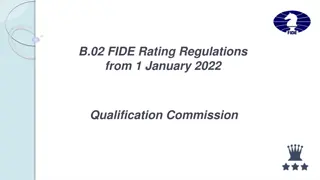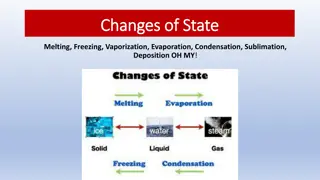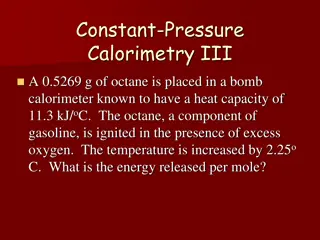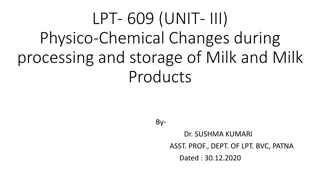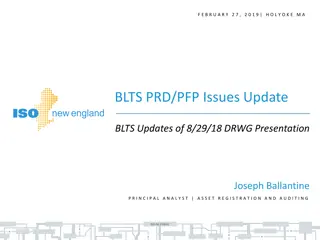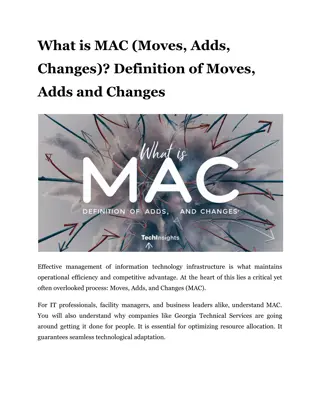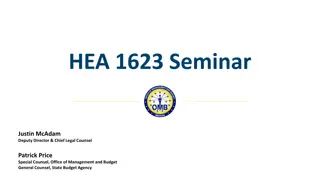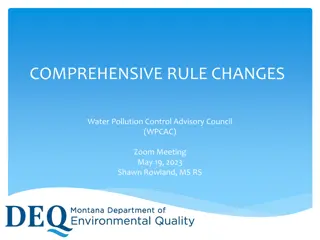
Understanding Postmortem Changes and Thanatology
Explore the scientific study of death through postmortem changes and thanatology. Learn about the stages of death, cooling of the body, postmortem hypostasis, rigor mortis, and more. Discover the importance of thanatology in various aspects such as time of death certification, life support, organ transplantation, and burial practices.
Uploaded on | 0 Views
Download Presentation

Please find below an Image/Link to download the presentation.
The content on the website is provided AS IS for your information and personal use only. It may not be sold, licensed, or shared on other websites without obtaining consent from the author. If you encounter any issues during the download, it is possible that the publisher has removed the file from their server.
You are allowed to download the files provided on this website for personal or commercial use, subject to the condition that they are used lawfully. All files are the property of their respective owners.
The content on the website is provided AS IS for your information and personal use only. It may not be sold, licensed, or shared on other websites without obtaining consent from the author.
E N D
Presentation Transcript
Postmortem changes Theeb Alkahatni
Thanatology The scientific study of death, deathbed visions Death is the transition of life, not the extinction. Biologically, organs and tissues die at different rate The cause of death, injury or disease resulting in death Manner of death, how the COD came out? Mechanism of death, the physiological changes produced by the COD
IMOPRTANCE OF THANATOLOGY Time of death Death Certification Life support Organ transplantation burial
Death occurs in 2 stages: somatic and molecular The immediate signs: pallor, loss elasticity of the skin, ocular signs(retinal segmentation, decreased IOP), 1stflaccidity of muscles, cessation of circulation not heart, cessation of respiration Brain death vs brainstem death. After 5 minutes? Legal death?,
PM changes Cooling of the body. Postmortem Hypostasis. Rigor Mortis. Putrefaction
Cooling of the body 1 C, the difference between Rectal > and Mouth temperature. 1.5 C/ 6 hours. Reach the environment temperature by 12-18 Factors affecting PM cooling: Air current, Body weight, Surface area relation with weight(children>), Coverings of Body, Atmo temp, Season, Night time, Body temp at the moment of death
Postmortem Hypostasis Liver mortis, staining Gravitation of blood inside the vessels, violent colour At the moment (start), 2 hours (appear), 8 hours(get completed). M/L imprtance: the position not before 2 hours, Sure sign of death 2-6 hours, may identify the COD, Lung and intestine are involved, absent in some cases(newborn, eldarly, anemic pt)
Contusion vs Hypostasis Might be mistaken Contusion: outside capillaries, swelling, colour is changed, any site not dependent area, +ve cellular reaction, no washig with pressure. Color might help: Red (CO, cyanide, cold, nitrate), pale ( bleeding).
Rigor Mortis Flaccidity , stiffening or RM The smaller the muscle, the earlier the onset of RM The younger, the more fit, the more The more fit Sever burn, No RM 0, 2, 12, 24 M/L importance: Sure sign, the time of death 24 hours ( 1stflaccidity0-2, RM2-24, 2ND flaccidity>24), the position, the cause.
RM vs Cadaveric spam, heat and cold stiffness DDx of RM: Cadaveric spam Heat stiffness. Cold stiffness.
Cadaveric Spam A muscular stiffness, voluntary muscle only. Extension of not all the body, but only groups of muscle in actions; so, no 1stflaccidity. Start at 0 With sever nervous tension Nevous?, not chemical ATP
Burn Coagulation of muscle protein Leads to Heat stiffness No 1stflaccidity Heat vs Cold Stiffness due to frozen of the body, also synovium
A crude but useful aide-memoire is: Body feels warm and flaccid dead less than 3 hours. Body feels warm and stiff dead 3 8 hours. Body feels cold and stiff dead 8 36 hours. Body feels cold and flaccid dead more than 36 hours.
Putrefaction The last stage Mainly due to bacteria Autolysis 24 hours in summer, 36 hours in winter. Greenish discoloration. Opposite to Rt. Iliac fossa. marbling phenomenon, arborization after 48
Putrefaction 1-3 days of PM: Greenish all over, the face is swollen After a week: putrefactive bullae under skin, tongue protrusion, a foul coarse bloody froth at the mouth and nostrils. After 2 weeks: peeling of skin, abdominal bursts, larvae (entomology), the body color is black and hair and nails fall
Putrefaction At 6 months: bones attached to bones At a year: dissolved ligaments and loose bones After a year: the estimation of the time of death by the weight of bones.
Factors affecting the rate of putrfaction: the warmer the temperature, the earlier the process starts and the faster it progresses. Age: less in child Poisoning delays it. High temp and moisture accelerate it. Air Manner of burial. Blood Mutilated bodies
Replacing putrefaction Adipocere formation, saponification?, a chemical change in the body fat, wet conditions, take weeks or months, Mummification, may desiccate instead of putrefying , hot dry climates such as the dessert, >thin, young (newborn). Embalming Maceration, fetus in utero
Immersion and burial the most common in the early stage is with the air-containing chest floating uppermost and the head and limbs hanging downwards
Estimation of PM changes interval the most useful method of estimating the time of death is Henssge s Nomogram. The rate of body cooling K in CSF, increased after death Other electorates. the extent of hypostasis, putrefaction, RM Entomology gastric content
1. Course outline 2. H identification 3. Csi and sciences 4. Imp pf pme 5. Reportable cases 6. Dc 7. Forensic systems 8. Pm changes







